Search
Maritime
View as
Sort by
Display
per page
00005 PROTECTIVE PROPERTIES OF CRUDE OILS IN CO2 AND H2S CORROSION
Product Number:
51300-00005-SG
ISBN:
00005 2000 CP
$20.00
01010 CORROSION MONITORING AND CONTROL OF SEAWATER INJECTION SYSTEMS USING AN EXPERT SYSTEM APPROACH
Product Number:
51300-01010-SG
ISBN:
01010 2001 CP
Publication Date:
2001
$20.00
02193 Corrosion Performance of AI 2519 in Marine Environments
Product Number:
51300-02193-SG
ISBN:
02193 2002 CP
Publication Date:
2002
$20.00
02288 EVALUATION OF INHIBITOR PERFORMANCE FOR PROTECTION AGAINST LOCALIZED CORROSION
Product Number:
51300-02288-SG
ISBN:
02288 2002 CP
Publication Date:
2002
$20.00
03252 CORROSION PROTECTION FOR BOLTING IN MARINE ENVIRONMENTS
Product Number:
51300-03252-SG
ISBN:
03252 2003 CP
Publication Date:
2003
$20.00
04004 Testing of Offshore Systems - Is There a Realistic Testing Scenario or is There Still Work to be done?
Product Number:
51300-04004-SG
ISBN:
04004 2004 CP
$20.00
04022 Experiences on Thermal Spray Aluminum (TSA) Coating for Offshore Structures
Product Number:
51300-04022-SG
ISBN:
04022 2004 CP
Publication Date:
2004
$20.00
04139 Corrosion Behavior of Carbon Steel, Low Alloy Steel and CRA's in Partially Deaerated Sea Water and Commingled Produced Water
Product Number:
51300-04139-SG
ISBN:
04139 2004 CP
Publication Date:
2004
$20.00
04151 High Strength Fasteners for Subsea Applications
Product Number:
51300-04151-SG
ISBN:
04151 2004 CP
Publication Date:
2004
$20.00
04284 Long-Term Performance of Steel in Concrete Immersed in Sea Water
Product Number:
51300-04284-SG
ISBN:
04284 2004 CP
Publication Date:
2004
$20.00
04298 Corrosion Evaluation of a High Performance Cu-Based Alloy for Seawater Applications
Product Number:
51300-04298-SG
ISBN:
04298 2004 CP
Publication Date:
2004
$20.00
04625 Integrity Assessment of Marine Offshore Networks Through Flowline/Wellhead Inspection Campaign
Product Number:
51300-04625-SG
ISBN:
04625 2004 CP
Publication Date:
2004
$20.00












